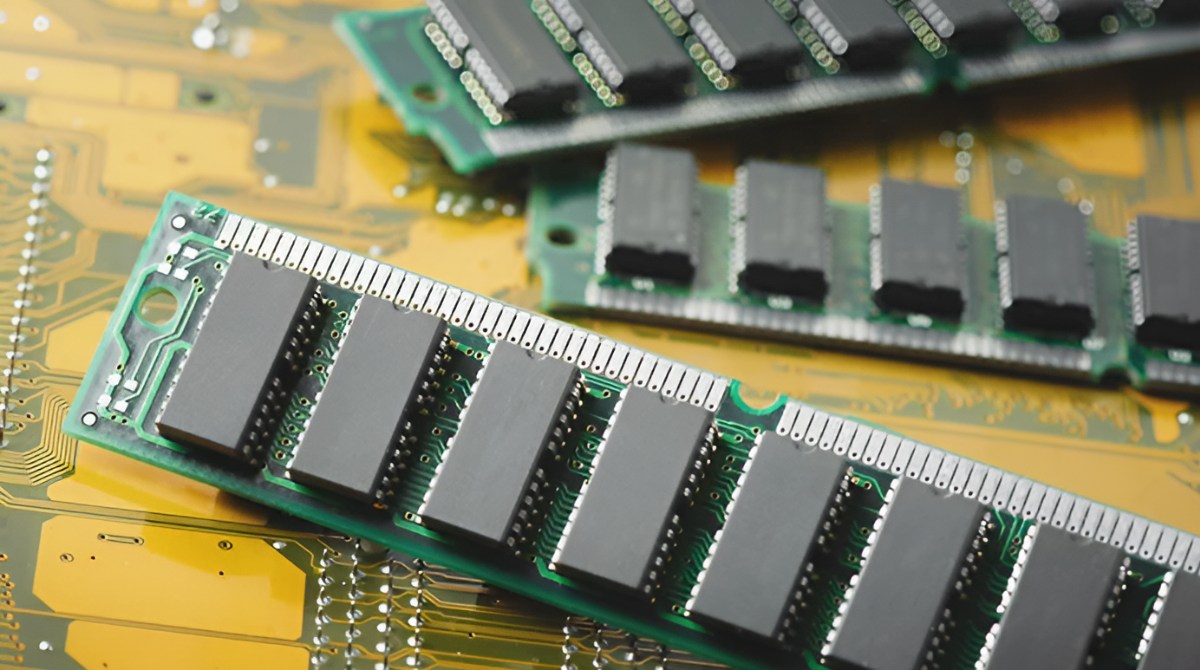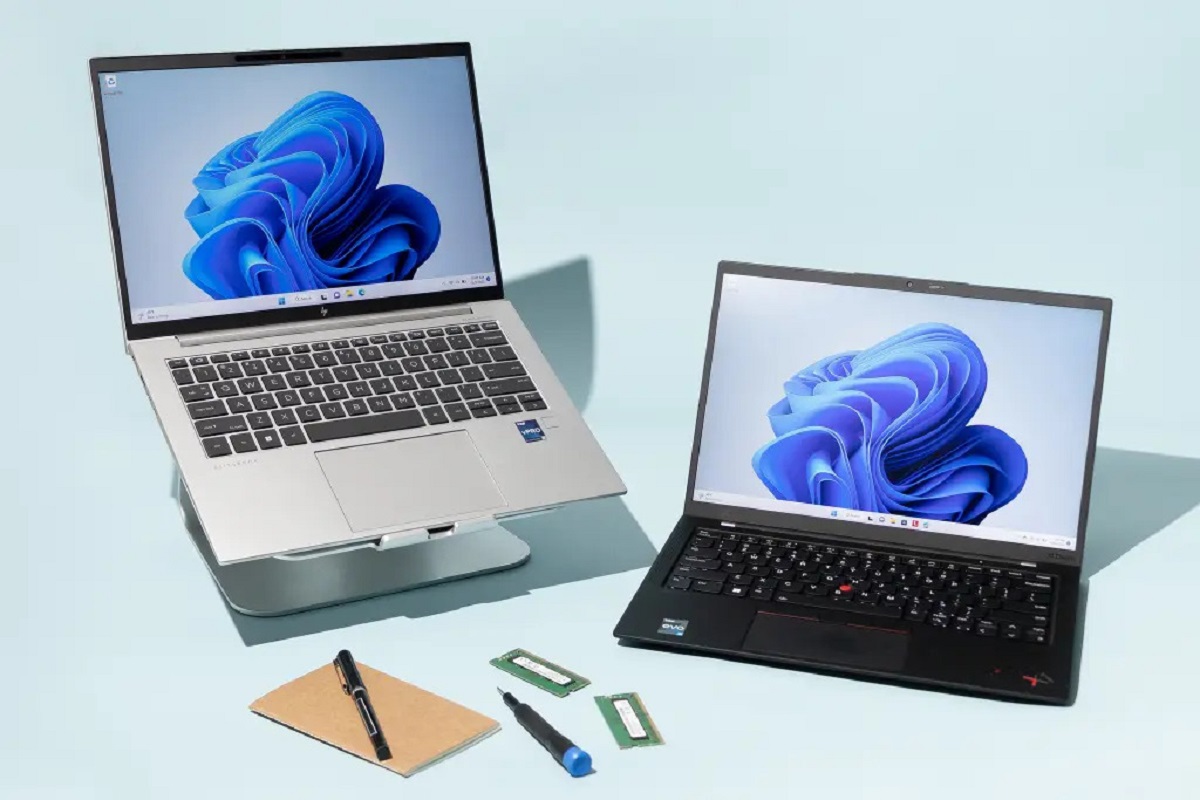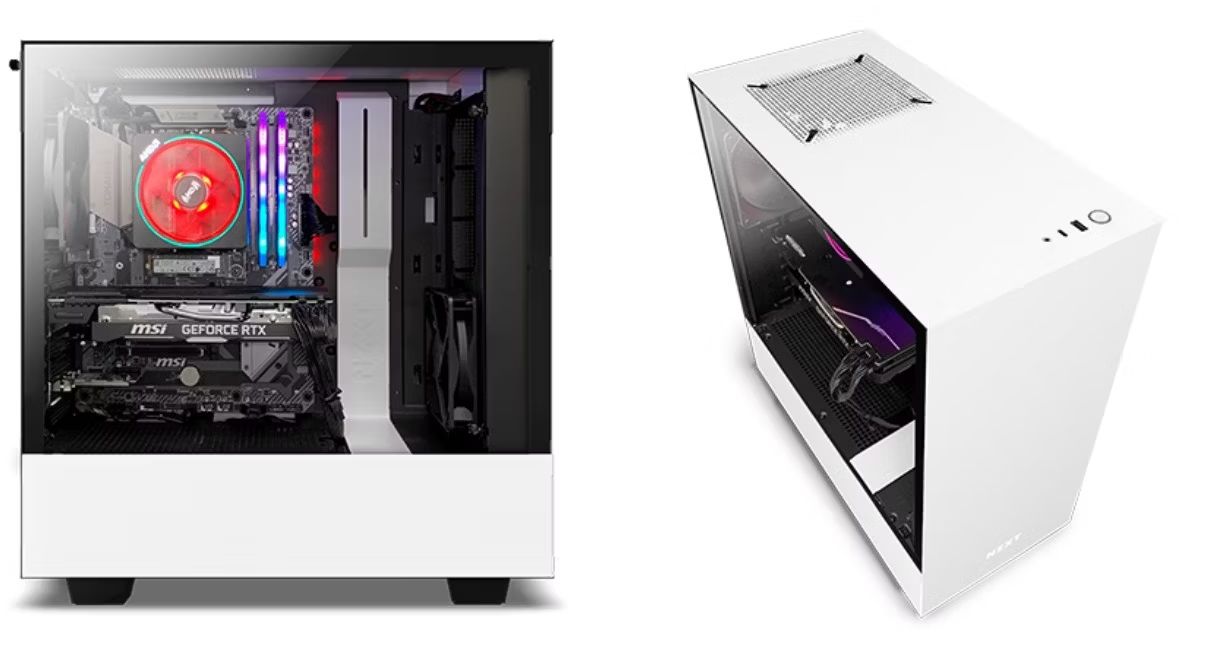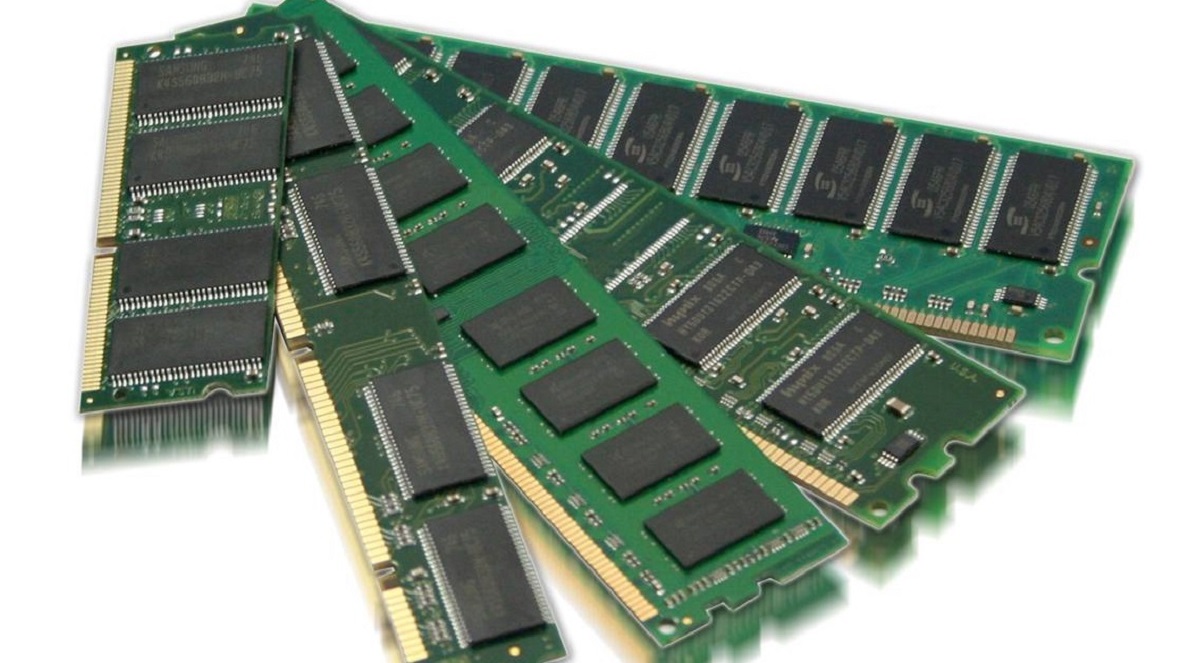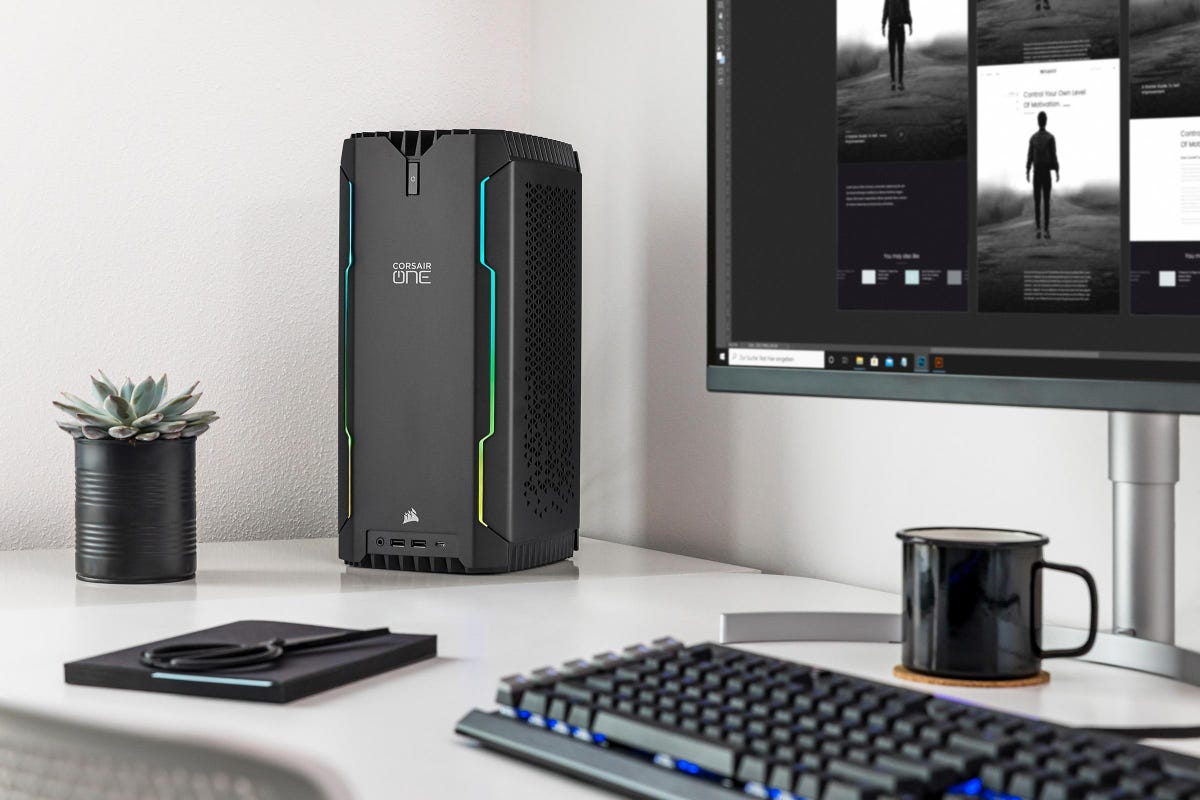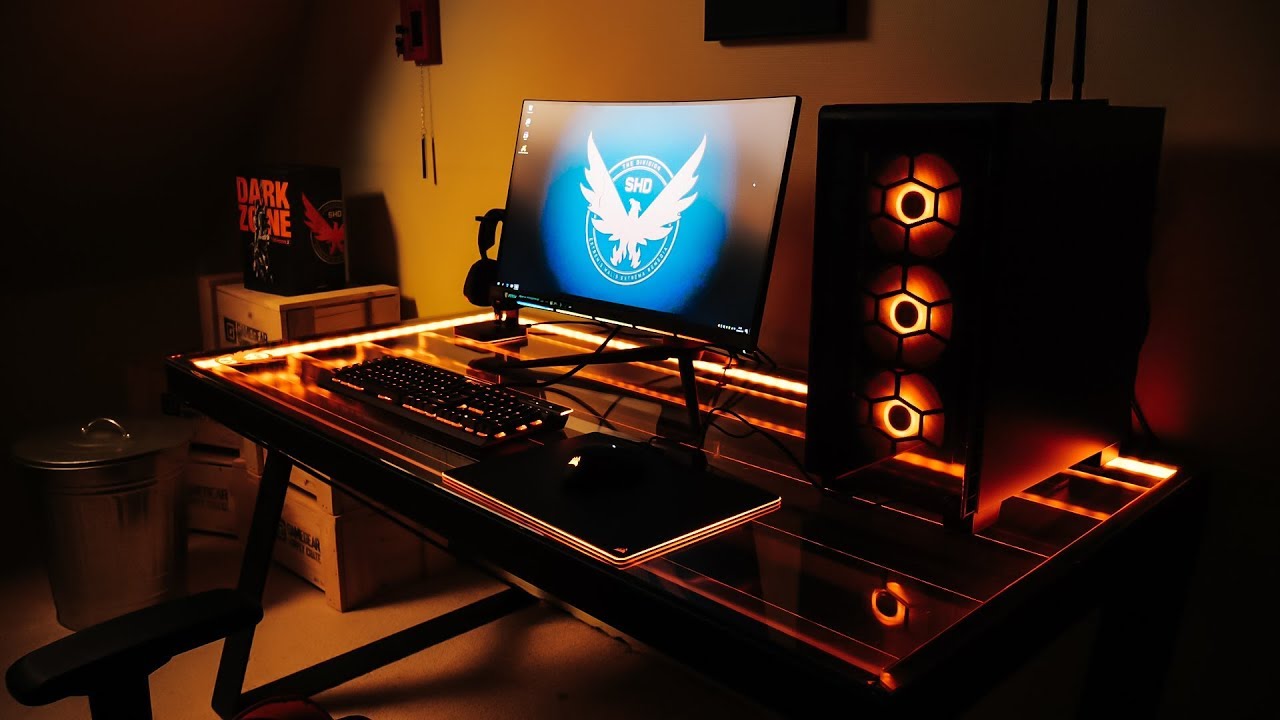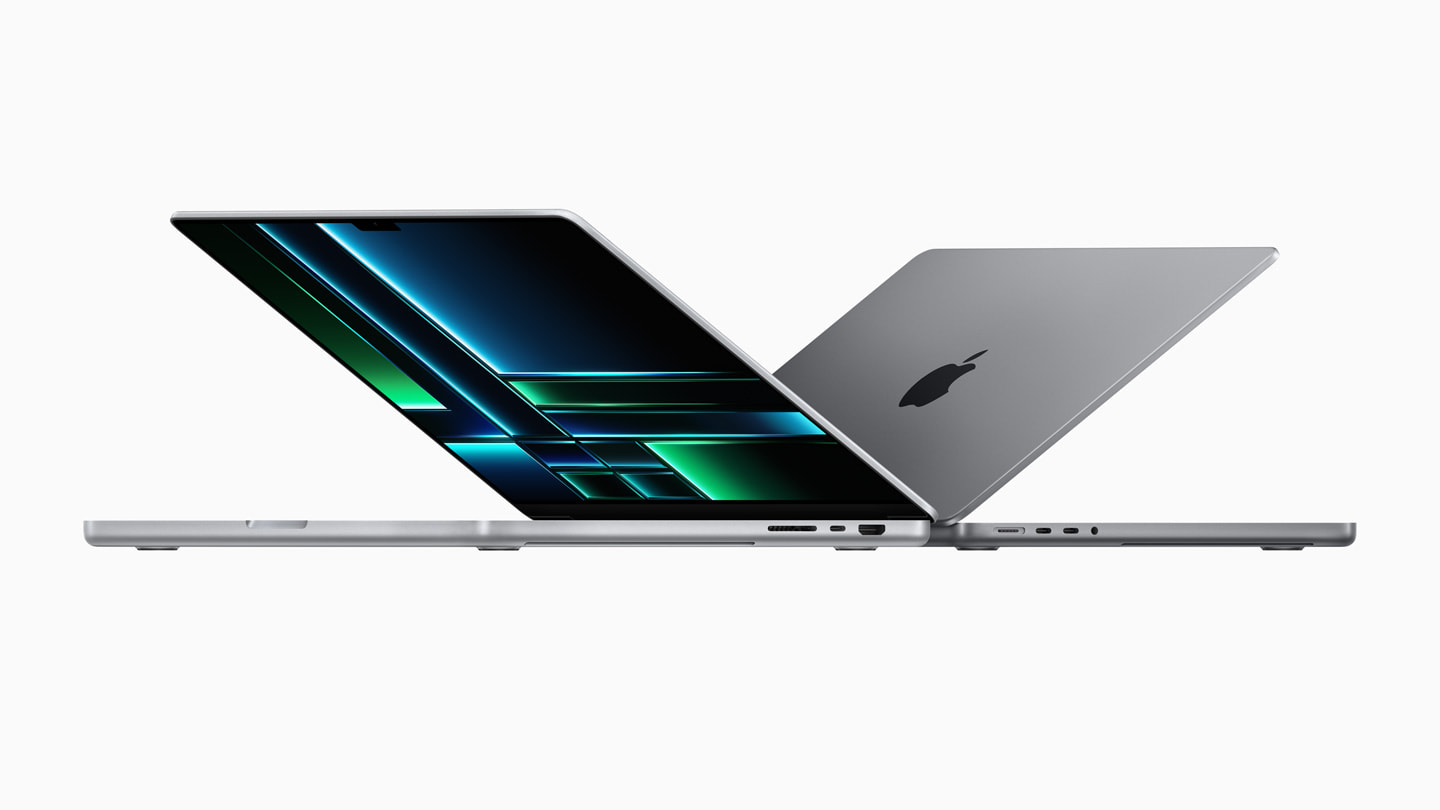Introduction
Welcome to the world of computer technology, where every action and operation is fueled by complex processes and components working together seamlessly. In this digital era, we often marvel at the speed and efficiency of our computers, but have you ever wondered about the inner workings that make it all possible? One such essential component is RAM, short for Random Access Memory.
RAM is a crucial component of any computer system, playing a vital role in the overall performance and responsiveness. It serves as the temporary storage for your computer, allowing it to quickly access and retrieve data to perform tasks efficiently. Whether you’re browsing the internet, editing documents, playing games, or running powerful software, RAM is constantly working behind the scenes to ensure smooth and efficient operations.
In this article, we’ll delve into the fascinating world of RAM, exploring its definition, purpose, operation, and types. We’ll also discuss the differences between DDR RAM and SRAM, the importance of RAM capacity and upgrades, the impact of RAM speed and latency, and provide tips on optimizing RAM performance. So, let’s dive deeper into the realm of RAM and discover how this essential component powers our digital experiences.
Definition and Purpose of RAM
RAM, which stands for Random Access Memory, is a fundamental component of modern computer systems. It serves as temporary storage for data that the computer system needs to access quickly and frequently. Unlike long-term storage devices like hard drives or solid-state drives (SSD), RAM provides much faster access to information, allowing for rapid processing and data retrieval.
The primary purpose of RAM is to provide a space for the computer’s operating system, applications, and data to reside while they are actively being used. This temporary storage enables the computer to quickly read, write, and modify data, significantly enhancing the system’s performance and responsiveness.
When you open an application or file, it gets loaded into RAM, allowing the processor to access and manipulate the data at very high speeds. The more RAM your computer has, the more data it can store and access simultaneously, reducing the need to rely on slower storage devices.
RAM operates on the principle of random access, meaning that any piece of data stored in it can be accessed equally quickly, regardless of its physical location. This is in contrast to sequential access memory, where data is accessed one item at a time in a specific order.
One essential characteristic of RAM is its volatility. Unlike permanent storage devices that retain data even when the power is turned off, RAM requires a constant power supply to keep the data stored within it. When the computer is shut down, all data stored in RAM is lost. This is why it’s crucial to save your work regularly and back it up on non-volatile storage devices.
In summary, RAM serves as a high-speed temporary storage for data that the computer system needs to access quickly. It plays a critical role in enhancing the performance and responsiveness of the computer by providing fast data retrieval and manipulation capabilities.
How RAM Works
Understanding how RAM works requires a basic knowledge of how data is stored and accessed in a computer system. When you turn on your computer, the operating system and essential programs are loaded into RAM, ready for execution. RAM is organized into millions or billions of small storage units called cells, each capable of storing a binary digit, also known as a bit. These cells are arranged in a grid-like structure, with rows and columns that create an addressable memory matrix.
When the computer needs to read or write data, it sends electronic signals to the specific row and column of the desired memory cell. The contents of that cell are then accessed and processed by the computer’s processor. This quick and direct access is what makes RAM so much faster than other storage devices.
RAM operates using a binary system, which means each memory cell can store either a 0 or a 1. These binary bits are combined to represent complex data such as numbers, letters, and instructions that the computer understands. The amount of RAM in a computer is typically measured in bytes, with common capacities ranging from gigabytes (GB) to terabytes (TB).
One important concept to understand is the distinction between RAM and storage devices like hard drives or SSDs. While both RAM and storage devices store data, they serve different purposes. RAM provides temporary, volatile storage for data that is currently being used by the computer, while storage devices offer long-term storage for files and programs, even when the power is turned off. RAM’s volatile nature means it needs a constant power supply to retain data, which is why the contents are lost when the computer is shut down.
Another critical aspect of RAM is its speed. The time it takes for the computer to access data from RAM is measured in nanoseconds (ns), making it significantly faster than accessing data from storage devices, which are measured in milliseconds (ms) or even seconds. The speed of RAM affects the overall performance of the computer system, particularly when it comes to multitasking and running resource-intensive applications.
In summary, RAM works by providing a high-speed, volatile storage space for data that the computer system needs to access quickly. Its organized grid-like structure allows for direct and rapid access to specific memory cells, resulting in fast data retrieval and processing. Understanding how RAM functions is crucial for optimizing system performance and ensuring smooth operation.
RAM Types
RAM comes in different types, each with its own characteristics and advantages. The two main types of RAM are Dynamic Random Access Memory (DRAM) and Static Random Access Memory (SRAM).
Dynamic Random Access Memory (DRAM) is the most common type of RAM found in modern computer systems. It is built using capacitors to store data in each memory cell. DRAM requires constant refreshing of the memory cells to maintain the stored data, as capacitance gradually diminishes over time. Although DRAM is slower and less expensive compared to SRAM, it offers higher storage densities and is suitable for most computing applications.
Static Random Access Memory (SRAM) is another type of RAM that is faster, more expensive, and generally used in specialized applications. Unlike DRAM, SRAM uses flip-flop circuits to store data in each memory cell, eliminating the need for constant refreshing. This makes SRAM faster and more reliable, but it also results in lower storage density and higher power consumption. SRAM is commonly used in cache memory and as a buffer for the CPU.
Another notable type of RAM is non-volatile RAM (NVRAM), which combines the benefits of RAM and permanent storage. NVRAM retains data even when the power is turned off, similar to storage devices like hard drives or SSDs. It is commonly used for saving BIOS settings and providing fast boot capabilities.
Within the DRAM category, there are further subdivisions based on technology and generations. The most common types include Synchronous DRAM (SDRAM) and Double Data Rate SDRAM (DDR SDRAM). SDRAM synchronized the memory operations with the computer’s clock speed, allowing for more efficient data transfer. DDR SDRAM improved upon SDRAM’s performance by allowing data to be transferred on both the rising and falling edges of the clock signal, effectively doubling the data transfer rate.
Over time, DDR SDRAM has evolved through several generations, including DDR2, DDR3, DDR4, and the latest DDR5. Each generation offers higher data transfer rates, lower power consumption, and increased capacity compared to its predecessor.
In summary, RAM comes in various types, including DRAM, SRAM, and NVRAM. DRAM, the most common type, provides high storage density and is suitable for general computing applications. SRAM is faster and more expensive, commonly used in specialized applications and cache memory. NVRAM combines the benefits of RAM and permanent storage. Within the DRAM category, SDRAM and DDR SDRAM are commonly used, with successive generations offering improved performance and capacity.
DDR RAM vs. SRAM
When it comes to RAM, two common types that often get compared are DDR RAM (Double Data Rate RAM) and SRAM (Static RAM). While both serve as temporary storage for data in a computer system, there are significant differences between the two in terms of speed, cost, and application.
DDR RAM, as the name suggests, is an evolution of SDRAM (Synchronous DRAM) that allows data to be transferred on both the rising and falling edges of the clock signal. This doubling of data transfer rate compared to traditional SDRAM makes DDR RAM much faster and more efficient.
One of the key advantages of DDR RAM is its higher data transfer rates, enabling faster access to data. This makes it ideal for demanding applications such as gaming, video editing, and running resource-intensive software. DDR RAM is commonly found in desktop computers, laptops, and servers.
Another important aspect of DDR RAM is its lower price compared to SRAM. DDR RAM is more cost-effective to produce, resulting in lower prices for consumers. This affordability makes DDR RAM the preferred choice for most computer systems, as it offers a good balance between performance and cost.
On the other hand, SRAM is a type of RAM that uses flip-flop circuits to store data in each memory cell. Unlike DDR RAM, SRAM does not require constant refreshing and offers faster access times. This speed advantage makes SRAM suitable for specialized applications that require high-performance storage, such as cache memory in CPUs or critical system components that demand quick data retrieval.
While SRAM is faster than DDR RAM, it comes at a significantly higher cost. SRAM is more expensive to produce due to its complex circuitry, making it economically impractical for use as the primary memory in most computer systems. As a result, SRAM is typically used as a cache memory in processors or as a buffer in high-performance networking and storage devices.
In summary, DDR RAM and SRAM differ in terms of speed, cost, and application. DDR RAM offers higher data transfer rates at a more affordable price, making it the go-to choice for most computer systems. SRAM, while faster, is much more expensive and is commonly used in specialized applications such as cache memory and high-performance networking devices.
RAM Capacity and Upgrades
RAM capacity plays a crucial role in determining the performance and capabilities of a computer system. The more RAM your computer has, the more data it can store and access simultaneously, resulting in improved multitasking, faster program execution, and smoother overall system performance.
When considering RAM capacity, it’s important to take into account the specific requirements of your computing needs. Basic tasks like web browsing, word processing, and email checking typically require 4GB to 8GB of RAM. However, for more demanding applications such as video editing, gaming, or running virtual machines, it’s recommended to have at least 16GB to 32GB or even higher for optimal performance.
If your computer is running out of RAM or struggling to handle the applications you use, upgrading the RAM can be a cost-effective solution to enhance performance. Before upgrading, you need to consider your computer’s motherboard compatibility and the maximum RAM capacity it supports. This information can usually be found in the computer’s user manual or by checking the manufacturer’s website.
RAM modules are typically sold in specific capacities such as 4GB, 8GB, 16GB, or higher. The upgrade process involves replacing the existing RAM modules with modules of higher capacity or adding additional modules to empty slots, depending on the available configuration of your computer.
One essential consideration when upgrading RAM is ensuring compatibility with your computer’s memory slots. Most computers use DDR SDRAM, and there are different generations such as DDR2, DDR3, DDR4, and DDR5. It is crucial to select RAM modules that match the generation supported by your motherboard for optimal compatibility.
It’s also important to note that an operating system can have limitations on the maximum amount of RAM it can utilize. For example, 32-bit versions of Windows have a limitation of 4GB of usable RAM, while 64-bit versions can utilize much larger amounts of RAM, depending on the specific edition.
Upgrading the RAM capacity can significantly improve your computer’s performance and allow it to handle more demanding tasks. It’s an effective way to extend the lifespan of your system without having to invest in an entirely new computer.
In summary, RAM capacity is a vital factor in determining a computer system’s performance, and upgrading the RAM can enhance multitasking and overall speed. Consider the specific requirements of your computing needs when determining the appropriate RAM capacity and ensure compatibility with your computer’s motherboard. Upgrading the RAM is an affordable and effective way to improve your computer’s capabilities and extend its lifespan.
RAM Speed and Latency
RAM speed and latency play a crucial role in determining the performance of a computer system. Speed refers to how quickly data can be transferred to and from the RAM, while latency refers to the amount of time it takes for the RAM to respond to a request for data.
The speed of RAM is measured in megahertz (MHz) or gigahertz (GHz), indicating the number of cycles per second that the RAM can perform. Higher RAM speeds result in faster data transfer rates, allowing for quicker access to information stored in the memory. Faster RAM speeds are especially beneficial for memory-intensive tasks such as gaming, video editing, and 3D rendering.
However, it’s important to note that the impact of RAM speed on overall system performance might be less significant compared to other factors such as CPU performance and storage speed. The benefits of high-speed RAM are more noticeable in specific tasks that heavily rely on memory operations.
Latency, on the other hand, is the delay between when a request for data is made and when the data is actually delivered by the RAM. It is typically measured in nanoseconds (ns). Lower latency indicates a faster response time, leading to quicker access to data. RAM latency depends on several factors, including the type of RAM and its timings.
RAM timings, often referred to as CAS latency (CL), represent the number of cycles it takes for the RAM to respond to a request. A lower CAS latency means that the RAM can retrieve the requested data more quickly. Balanced timings, represented as a series of four numbers (e.g., 16-18-18-36), also indicate the delay between specific operations of the RAM module.
When selecting RAM for your computer system, it’s important to strike a balance between speed and latency. Higher speed RAM might have slightly higher latency, while lower latency RAM might have slightly lower speeds. It’s crucial to consider the specific requirements of your computer usage, as certain tasks benefit more from increased RAM speed, while others benefit more from lower latency.
It’s worth noting that the overall performance gain from increasing RAM speed or reducing latency might not be as substantial as other hardware upgrades, such as upgrading the CPU or storage. However, for users engaged in memory-intensive tasks or those seeking to squeeze out every last bit of performance, investing in faster and lower latency RAM can provide noticeable improvements.
In summary, RAM speed and latency are important factors in determining the performance of a computer system. Higher RAM speeds result in faster data transfer rates, while lower latency provides quicker access to data. Balancing speed and latency is crucial, and it’s important to consider specific use cases when selecting RAM. While the impact of RAM speed and latency on overall system performance might not be as significant as other hardware components, it can provide noticeable improvements in memory-intensive tasks.
Benefits of Upgrading RAM
Upgrading your computer’s RAM can provide several significant benefits, improving system performance and enhancing your overall computing experience. Here are some of the key advantages of upgrading your RAM:
1. Enhanced Multitasking: With more RAM, your computer can handle multiple tasks simultaneously without slowing down. Opening multiple applications, running resource-intensive software, or having multiple browser tabs open becomes smoother and more efficient.
2. Increased Responsiveness: Upgrading your RAM results in faster data access and retrieval, leading to quicker response times for applications. You’ll notice a significant improvement in system responsiveness, with faster application launches, file openings, and data loading.
3. Improved System Performance: By providing additional working memory, upgraded RAM allows your computer to process larger and more complex files more efficiently. This can lead to improved performance in tasks such as video editing, 3D rendering, gaming, and running virtual machines.
4. Better Gaming Experience: Gaming can be demanding on system resources, and having insufficient RAM can lead to lagging, slowdowns, and reduced graphics performance. Upgrading your RAM can enable your computer to smoothly handle the latest games, allowing for higher frame rates, improved graphics quality, and an overall better gaming experience.
5. Virtualization and Software Development: If you run virtual machines or engage in software development tasks, upgrading your RAM is crucial. These activities often require significant amounts of memory to allocate resources effectively and efficiently. More RAM allows you to run multiple virtual machines or complex development environments without performance bottlenecks.
6. Future-Proofing: Upgrading your RAM helps future-proof your computer. As software and applications continue to evolve, they often become more resource-intensive. By investing in greater RAM capacity now, you can ensure that your computer meets the demands of future software updates and system requirements without the need for immediate upgrades.
7. Cost-Effective Solution: Upgrading RAM is often more cost-effective than investing in a completely new computer. It extends the life and usability of your current system, allowing you to experience performance benefits without the expense of a full upgrade.
8. Simple and Easy Installation: RAM upgrades are relatively simple and straightforward, requiring minimal technical knowledge. The process usually involves opening your computer case, inserting the new RAM modules into the designated slots, and powering on your computer – no complex configurations or software installations required.
In summary, upgrading your computer’s RAM offers numerous benefits, including enhanced multitasking capabilities, increased responsiveness, improved system performance, better gaming experiences, and support for resource-intensive tasks like virtualization and software development. It also provides a cost-effective solution for improving computer performance without investing in a new system. With its simple installation process, upgrading RAM is a straightforward way to optimize your computer’s performance and future-proof your system.
How to Check RAM Usage
Checking your computer’s RAM usage is a straightforward process that can provide valuable insights into how your system is utilizing memory. Here are a few methods to check RAM usage:
1. Task Manager (Windows): On Windows operating systems, you can use the built-in Task Manager utility to check RAM usage. Simply right-click on the taskbar and select “Task Manager” or press “Ctrl + Shift + Esc” to open it. In the Task Manager window, navigate to the “Performance” tab and select “Memory” to view the RAM usage details, including total RAM, in use, and available memory.
2. Activity Monitor (Mac): Mac users can use the Activity Monitor to check RAM usage. Open the “Applications” folder, go to the “Utilities” folder, and open the “Activity Monitor” app. In the Activity Monitor window, click on the “Memory” tab to view the RAM usage details, including used memory, free memory, and memory pressure.
3. Resource Monitor (Windows): For more detailed information on RAM usage in Windows, you can use the Resource Monitor. To open it, type “Resource Monitor” in the Windows search bar or open the Task Manager and select the “Performance” tab. Click on “Open Resource Monitor” at the bottom, and in the Resource Monitor window, go to the “Memory” tab for detailed information on RAM usage, including processes and their memory consumption.
4. Third-Party Monitoring Tools: There are several third-party monitoring tools available that provide advanced insights into RAM usage. Tools like HWMonitor, Speccy, and CPU-Z offer detailed information on RAM usage, including capacity, speed, timings, and real-time monitoring of memory usage by different processes.
5. Command Line/ Terminal: Another way to check RAM usage is by using the command line or terminal. On Windows, you can open the Command Prompt and type “wmic MEMORYCHIP get Capacity, Speed” to view basic details of your RAM modules. On Mac or Linux, opening the terminal and typing “free -m” will display memory usage details.
By using any of these methods, you can easily check the current RAM usage of your computer. Monitoring RAM usage can help you identify potential performance issues, understand resource utilization, and determine if additional RAM is needed to meet the requirements of your tasks and applications.
In summary, checking RAM usage is essential for monitoring resource consumption and optimizing system performance. Whether using the built-in Task Manager or Activity Monitor, third-party monitoring tools, or command line/terminal commands, you can easily keep track of your computer’s RAM usage and make informed decisions regarding system upgrades or resource management.
Tips for Optimizing RAM Performance
Optimizing RAM performance can help improve the overall speed and responsiveness of your computer system. By implementing these tips, you can ensure efficient memory usage and maximize the benefits of your RAM:
1. Close Unnecessary Programs: Running too many programs simultaneously can use up valuable RAM resources. Close any unnecessary applications and processes to free up memory for the tasks you’re actively working on.
2. Uninstall Unused Programs: In addition to closing programs, consider uninstalling any unused or unnecessary software. This will not only free up disk space but also prevent unnecessary background processes from consuming valuable RAM.
3. Use a Lightweight Antivirus: Some antivirus programs can be resource-intensive and use up a significant amount of RAM. Consider using a lightweight antivirus solution that minimizes its impact on system resources while still providing proper protection.
4. Adjust Visual Effects: Windows and other operating systems offer various visual effects that can use additional RAM. Consider adjusting or disabling these effects to reduce unnecessary memory usage and improve system performance.
5. Update Software and Drivers: Keeping your software and device drivers up to date can help optimize RAM performance and ensure compatibility with the latest optimizations and enhancements.
6. Limit Startup Programs: Many programs are set to launch automatically when you start your computer, consuming valuable RAM resources. Use the task manager or system preferences to limit the number of startup programs, allowing your system to boot up faster and use less memory.
7. Adjust Virtual Memory/Pagefile: Virtual memory, also known as the pagefile, is a space on your hard drive used by the operating system to supplement physical RAM. Adjusting the size of the pagefile can help optimize RAM usage. While it doesn’t directly enhance RAM performance, it can prevent system slowdowns when physical RAM reaches its capacity.
8. Upgrade to Higher Capacity or Faster RAM: If your computer often runs out of RAM or you perform memory-intensive tasks, consider upgrading to higher capacity or faster RAM modules. This will allow for smoother multitasking, faster data access, and improved overall system performance.
9. Maintain Good System Hygiene: Regularly perform system maintenance tasks such as disk cleanup, defragmentation, and malware scans to keep your system running smoothly. These tasks help optimize resource allocation and prevent unnecessary memory usage.
10. Restart Your Computer: Restarting your computer regularly helps free up system resources, including RAM. This flushes out temporary data and allows for a fresh start, improving overall system performance.
By following these tips and implementing best practices, you can optimize RAM performance and ensure that your computer system effectively utilizes available memory resources. This, in turn, leads to improved speed, responsiveness, and a more efficient computing experience.
Conclusion
RAM, or Random Access Memory, is a critical component in any computer system. It serves as temporary storage for data, allowing the computer to quickly access and retrieve information for a wide range of tasks. Understanding RAM, its types, capacity, and performance characteristics, is essential for optimizing system performance and ensuring a smooth computing experience.
In this article, we explored the definition and purpose of RAM, how it works, and the different types of RAM available. We also discussed the differences between DDR RAM and SRAM, the benefits of upgrading RAM capacity, and the impact of RAM speed and latency on system performance. Additionally, we learned how to check RAM usage and implement tips for optimizing RAM performance.
By upgrading RAM, users can enhance multitasking capabilities, improve system responsiveness, and enable smooth execution of resource-intensive tasks. Whether it be gaming, video editing, or running virtual machines, having sufficient and fast RAM is crucial for optimal performance. Regularly checking RAM usage and implementing optimization techniques can help ensure efficient memory management, allowing the computer to perform at its best.
Remember, upgrading RAM is a cost-effective way to boost system performance and extend the lifespan of your computer. It’s important to consider your specific computing needs and ensure compatibility with your system’s hardware and software requirements when selecting and upgrading RAM.
In conclusion, RAM is a fundamental component that plays a vital role in enhancing the overall performance and responsiveness of a computer system. By understanding its significance, optimizing performance, and upgrading when necessary, users can unlock the true potential of their computers and enjoy a seamless computing experience.







